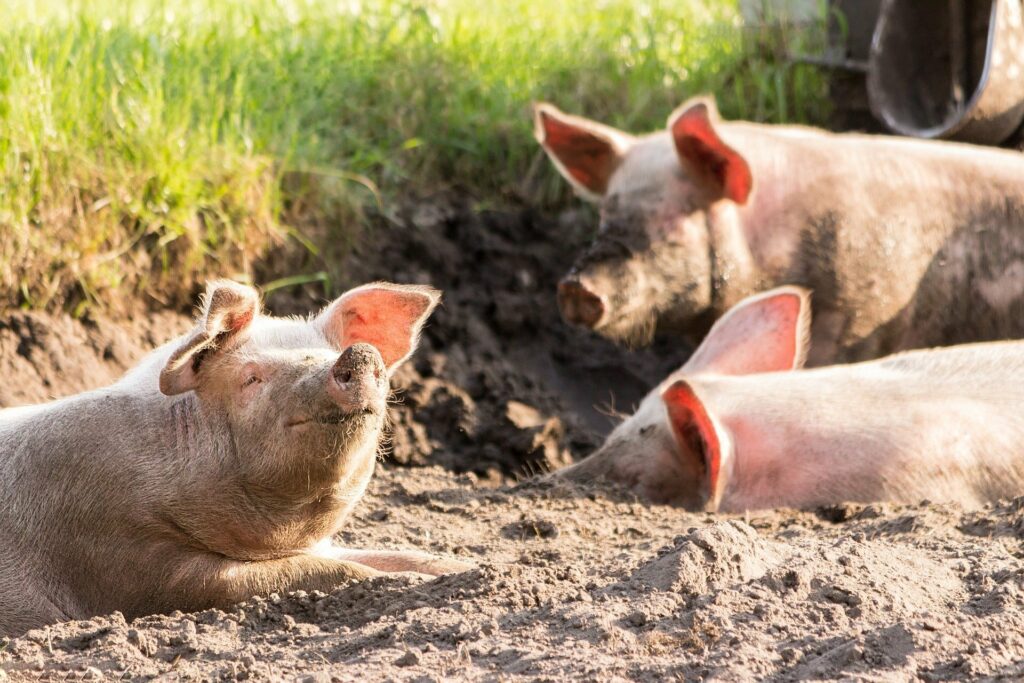Pigs were also faster than dogs in solving the task researchers handed to them, adding more weight to the intelligence of these mammals.

We’ve known for quite a while that pigs are intelligent, emotional, and cognitively complex. They love to play, they exhibit a wide range of emotions and relationships, and they’re quite good at problem-solving.
In a new study, researchers at Eötvös Loránd University, Budapest (ELTE) compared the problem-solving attitudes of dogs to those of humans.
In neutral situations, both dogs and pigs look to humans for interaction. But when faced with an unsolvable problem, dogs exhibit spontaneous human-oriented behaviors, attempting to initiate communication. In other words, dogs look to humans for help when it comes to problem solving.
Meanwhile, pigs tend to be more independent thinkers. Much like wolves and other animals, pigs attempt to solve problems on their own, without the help of humans.
“Similarly socialized wolves and cats communicate less with humans than dogs in the same problem-solving context, but maybe it is because wolves are not domesticated, and cats are not a social species. So we designed a study to compare dogs’ behavior with that of another domestic and social species, the pig,” explains Ph.D. student Paula Pérez.
To put the hypothesis to the test, they tested 10 companion miniature pigs, raised as pets (just as people raise dogs). Since the pigs were exposed to a similar environment to pet dogs, this puts them on an equal footing and eliminates the impact of the environment in which the animals grew up in.
“We launched the Family Pig Project in 2017 at the Department of Ethology, Budapest. The animals are raised in a similar environment as family dogs, providing the basis for unique comparative investigations between the two species,” explains Attila Andics, principal investigator of the MTA-ELTE ‘Lendület’ Neuroethology of Communication Research Group.
In the study, the animals first had to solve a simple problem: a transparent plastic container containing food that they had to turn upside down to get access to the food.

Then, the problem became unsolvable, and the container was fixed in place. There were two goals: the first one was to see how easily pigs solve the problem compared to dogs. The second was to see how pigs behaved when they couldn’t solve the problems.
As it turns out, pigs were faster than dogs (although this could be attributed to their ease of turning the container).
However, when they couldn’t solve the problem, they didn’t look for external help, and instead tried to handle things on their own.
“We used the so called ‘Unsolvable task paradigm,’ where the animal first faces a problem that he can solve, in our case an easy-to-open box with food inside. After some trials, the problem becomes unsolvable because the box is securely closed,” adds Pérez. “When the box was first in the room without food in it, pigs and dogs performed similar human-oriented behaviors,” says Linda Gerencsér, research fellow at the Research Group. “The differences appeared when we put food in the box and opening it became an exciting challenge. Pigs were faster than dogs already in solving the task and getting the reward, perhaps due to their better manipulative capacities. Then, when the task became unsolvable, dogs turned to the humans more than before. In contrast, pigs performed less human-oriented behaviors, but they were more persistent than dogs in trying to solve the task, which may reflect their predisposition to solve problems independently.”

This is the first study to directly compare family dogs and pigs’ problem-solving abilities, and shows just how able pigs really are. They are as smart, and a bit more independent than our best friends.









